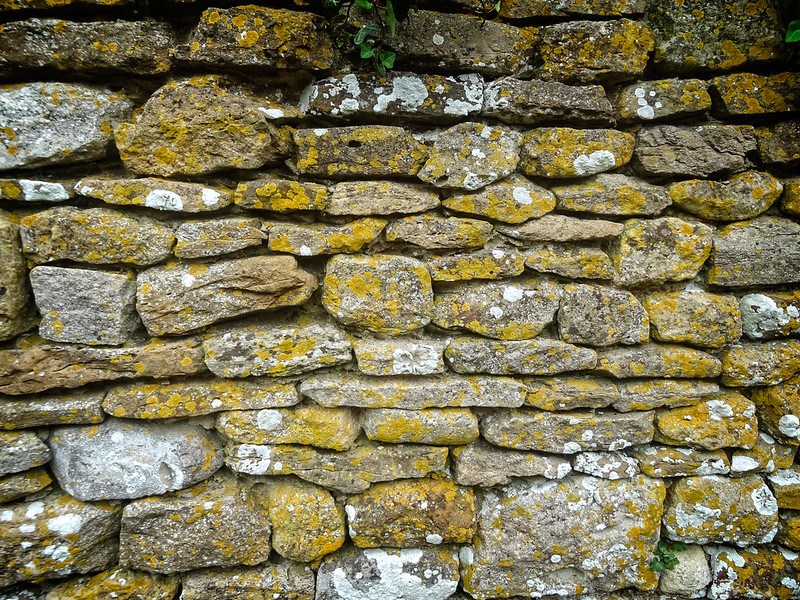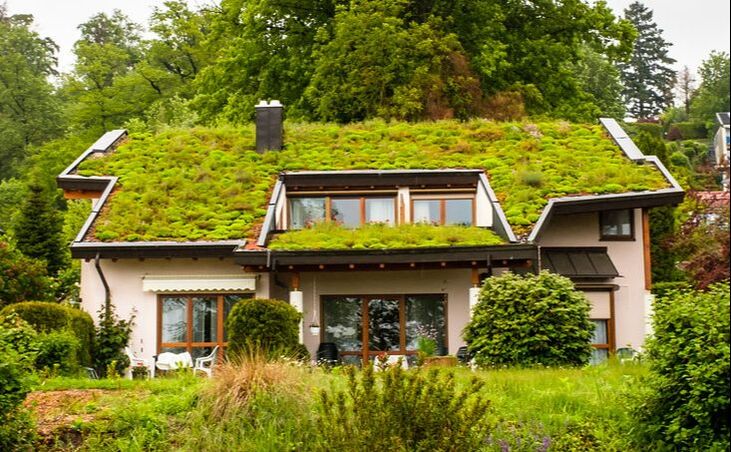|
This article contains affiliate links
Gardens provide us with a small piece of natural tranquillity. In such a busy and stressful world they offer us a green oasis in which to relax.
These little moments are precious and noise pollution can really put a damper on things. Unfortunately many gardens reside in close proximity to roads, railways, airports and other gardens. Consequently you are not always in control of the volume level. There is nothing worse than having to put up with disturbing noise in the garden. Hence there is often a desire to do whatever you can to mitigate excess sound. Fundamentally there are two strategies for making your garden quieter. Blocking sound waves and reflecting them away or absorbing sound energy. In this article we will list and describe methods and elements which will reduce noise in your garden. 1. Absorb sound waves with hedging
Hedges can not only create a physical visual barrier they can also block sound. Tall hedges can both reflect and absorb sound energy reducing garden volumes. The best hedges are those with soft and fine textured foliage. Species such as Leylandii, Juniper and Yew are good examples of sound absorbers. Most hedge species will provide some sound reduction; do bear in mind hedges can take several years to establish. 2. Sound absorbing plantingIt is not just hedging which can help to absorb sound energy in the garden. Many other types of planting can make effective sound proofing. Like hedging the best species are those which have a dense growing structure and fine texture. Plants such as pampas grass, choysia, and bamboos are some good examples. Bamboos and tall grasses also have the advantage of creating a gentle rustling in the breeze. This can help to dilute sounds coming from outside your boundary. 3. Trees
Trees can offer another effective way of blocking and absorbing external sound. In a similar way with hedges, planting dense, fine textured foliage is best. The added benefit with trees is they can diffuse sound at a higher level. This can be especially beneficial to blocking distant noise sources. Trees can be grown next to sound barriers and fences to add a higher green barrier to noise. Many species of trees will also provide and gentle rustling sound and encourage bird song. 4. Wildflower meadows
Wildflower meadows are becoming an ever popular garden feature. Not only do these wild grasslands look amazing they also provide habitat and reduce the need for mowing. Like other sound absorbing vegetation the dense, finely textured foliage helps to absorb sound waves. Meadows will provide plenty of distractions to outside noise like the flutter of butterflies and nectar seeking insects. 5. Artificial grassArtificial grass is not the first material to come to mind when thinking of noise reduction. However it has actually been shown to help reduce noise pollution. This surface can be fixed to fences and walls creating a kind of artificial green wall. The fine textured material can help absorb sound energy and help avoid bounce back from vertical surfaces. When laid as a horizontal surface foam underlay’s can absorb sound energy very effectively. 6. Set up acoustic fencing
All gardens have some sort of boundary and most gardens typically have some kind of fencing. Particularly if you are in need of replacing an old fence why not install acoustic fencing? Acoustic panels now come in a wide range of colours materials and styles. Depending on the local planning rules in your area some of these can be erected to a significant height. 7. Masonry walls
If your garden suffers from a direct source of noise pollution a dense barrier is the best option. A tall masonry wall at least 200mm thick is a good barrier. Such walls can be constructed of concrete, brick or even natural stone. Such walls on the garden side can be clad with dry stone walling which can absorb excess sound energy. It is even more effective to have a central air cavity within the wall to prevent vibrations travelling through. 8. Gabions
Gabions have become a more familiar garden feature in recent years. These large block like structures can create beautiful landscape structures and garden features. Gabions are effectively robust metal cages filled with rocks. These come in a range of sizes making them very versatile. They can be used to retain soil, create seating but more typically as walls. The individual rocks within gabions vibrate independently diffusing and absorbing sound energy. 9. Raised bedsOne of the best, natural absorbers of sound is topsoil. Billions of tiny soil particles act like a sponge absorbing sounds and reducing decibels. Hence gardens designed to reduce noise should have as many flower borders as possible. One of the best ways to compound the benefits of topsoil is to build raised beds. These can boost the volume of topsoil on your site and maximise sound absorption potential. Raised beds can be combined with fine textured hedges along a noisy boundary extra effectiveness. 10. PergolasPergolas are a striking feature which can be built to fit numerous garden styles and designs. These enable you to implement a vertical line to the landscape and create suspended canopies. In relation to reducing sound pergolas can insulate seating areas from incoming sound waves. This is especially the case if covered with climbing plants. Some of the best pergolas for sound proofing are those with transparent rain shelters built in. This provides an extra layer of sound protection for the seating areas below. 11. Install green walls to vertical surfaces
Green walls are becoming an ever more familiar landscape installation to the urban environment. A staple of ecological and sustainable landscaping green walls can mitigate negative impacts of development. Some of these include flooding, air pollution, biodiversity loss and urban heating but can also reduce noise. The combination of growing substrates and dense vegetation means green walls can reduce sound waves effectively. Green wall installations come in a wide range of products from fabric pockets to modular, planting systems. 12. Install a green roof
When attempting to reduce noise pollution in your garden every extra installation can help. Rooftops are sometimes overlooked when planning any external space. This is no less the case when it comes to reducing sound waves. Large and extensive flat surfaces can actually help to bounce around sound vibrations. Hence it should be aimed to soften these surfaces where possible. A great way to do this is by vegetating exposed rooftops to sheds and garages. Typically the green roof systems themselves, substrates and plantings all help to absorb excess sound. 13. Build a pond
Another great way to reduce sound pollution in gardens is with ponds. The large the volume of water the better! Water molecules absorb incoming noise; the molecules vibrate draining the velocity of sound energy. This means installing a reasonably sized pond can really help to make your garden quieter. Wildlife ponds with plenty of marginal vegetation and substrates are even better than formal ponds. 14. Install a water feature
Perhaps not exactly the same as reducing incoming sound but pleasant sounds can help to mask negative sounds. One of the most popular ways to do this is with the sound of trickling water. This is a naturally relaxing and calming sound and easy to create with water features. Water features are extremely varied in materials, sizes and styles and are very easy to install. 15. Garden speakers
If you are open to the idea of drowning out bad sounds with good ones external speakers are an option. There are now many types of external speakers that can tolerate garden conditions. Some of the most fun of these are garden rock speakers. These camouflage speakers are perfect for around rockeries or garden ponds. External speakers typically hook up to smart phones via Bluetooth. This means you can listen to gentle mood music or even your favourite podcast.
Thank you for reading our article on how to make your garden quieter! If it helped with your search why not share it on social media via the tabs below? This really helps us out and allows us to write more helpful content in the future! Thank you!
If you are starting a new garden project why not check out our resource page here.
'As an Amazon affiliate I earn from qualifying purchases'
0 Comments
Leave a Reply. |
The Author
|
Landscaping services across Buckinghamshire, Amersham, Aylesbury & High Wycombe
Hyde Heath, Amersham, Buckinghamshire |
|




















